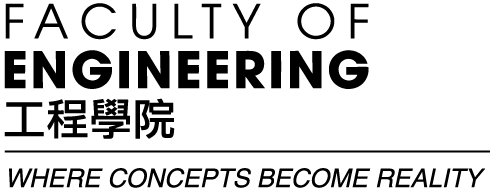2025 Biomedical Engineering Day and Alumni Homecoming
The Department of Biomedical Engineering at The Hong Kong Polytechnic University (PolyU) hosted the 2025 Biomedical Engineering Day & Alumni Homecoming on 29 March 2025 (Saturday), welcoming BME students and alumni, staff and industry partners to a day filled with insightful discussions, innovative showcases, and community engagement.
The event commenced with a motivating opening ceremony led by Ir Professor Ming ZHANG, Head of Department and Chair Professor of Biomechanics. In his opening address, Professor ZHANG emphasized the department's commitment to fostering innovation and collaboration within the biomedical engineering field, and shared some recent updates of the Department.
A highlight of the ceremony was the award presentations, where distinguished individuals were recognized for their achievements. Mr Chapman LEE, Director of Imsight Technology Co. Ltd., received the 2024 Outstanding Alumni Award in Entrepreneurial Achievement. Additionally, recipients of the 2024/25 BME Entrance Scholarship for Taught Postgraduate Students, the 2024 Distinguished Publication Awards, and the 2024 Rising Researcher Awards were honoured.
(Top left) Mr Benjamin CHAN, Chairman of the Departmental Advisory Committee and Managing Director at MediConcepts Limited (left) and Ir Prof. Ming ZHANG, Head of Department of Biomedical Engineering and Chair Professor of Biomechanics (right) presenting the 2024 Outstanding Alumni Award in Entrepreneurial Achievement to Mr Chapman LEE, Director of Imsight Technology Co. Ltd (middle) for his exceptional innovation and support for the BME community.
(Top right) Prof. Youhua TAN, Associate Professor, presenting 2024/25 BME Entrance Scholarship for Taught Postgraduate Students to the awardees.
(Bottom left & right) Prof. Mo YANG, Associate Head (Research) and Chair Professor of Precision Theranostics, presenting the 2024 Distinguished Publication Awards and the 2024 Rising Researcher Awards to the awardees.
Another highlight of the ceremony was Ir Professor Yongping ZHENG's announcement of the newly established BME Entrepreneurs Club (BMEEC). This new initiative is dedicated to nurturing entrepreneurial spirit within the BME community, with its mission to support start-ups towards success and share entrepreneurship stories. The Club's launch was met with enthusiasm, marking a new chapter in the department's efforts to bridge academia and industry.
To echo the opening addresses by Ir Professor ZHANG and Ir Professor ZHENG, the event continued with an entrepreneurial talk by Mr Chapman LEE. This enlightening talk focused on embracing the changes in the AI era and driving AI into real practice, providing attendees with valuable perspectives on navigating the evolving technological landscape.
The afternoon was filled with a variety of activities, showcasing the latest technology transfers and innovations in BME. Participants had the opportunity to register for free body screenings – foot, knee, liver, and spine scans – allowing them to experience firsthand how innovations are applied in real-life practices. A tour offered a dive into the state-of-the-art facilities of the BME laboratories, while a STEM class aimed at cultivating innovative mindsets among young attendees. The demonstrations of prosthetics and orthotics, featuring showcases of P&O equipment from Exoskeletons and Ottobock, were made possible through the contributions of our Biomedical Engineering alumni, who have continued to innovate and excel in the field after graduation. The Department also invited Mr Shun and Mr Fung to demonstrate the real-life use of sports prostheses. Mr Fung shared his inspiring story of how these technologies have significantly enhanced his quality of life, allowing him to enjoy running.
The event concluded with a BME community-engaging activity, the Taichi-run competition, where participants celebrated fitness together through this heart-rate regulating sport. Year 4 BME undergraduate student Mr Alex Tran, who is currently an athlete on PolyU's Sports Team, kicked off the Taichi-run by leading the runners in stretching and warm-up exercises.
The 2025 Biomedical Engineering Day & Alumni Homecoming successfully achieved its goal of engaging the BME community, providing a means for networking, learning and collaboration. The department looks forward to continuing its tradition of excellence and innovation in the years to come.















